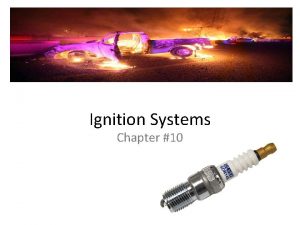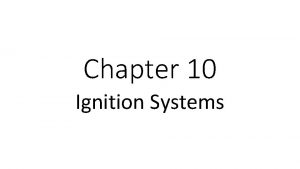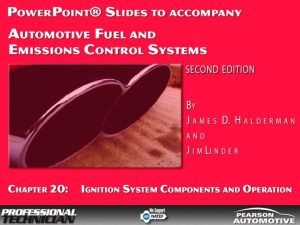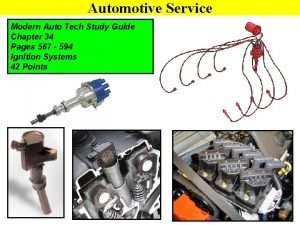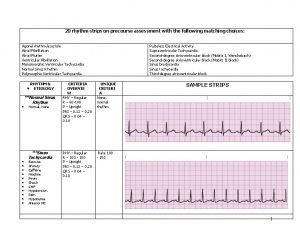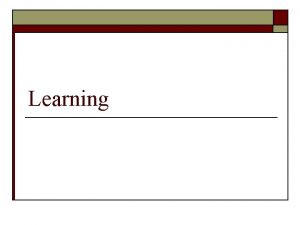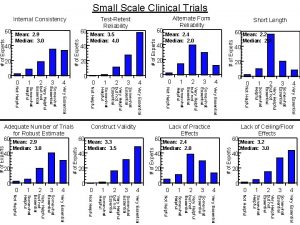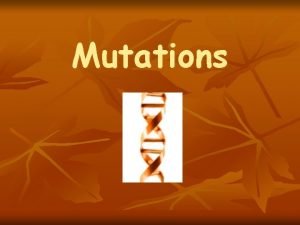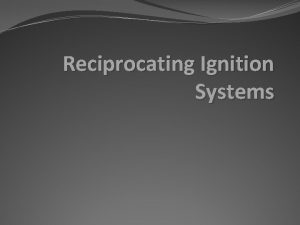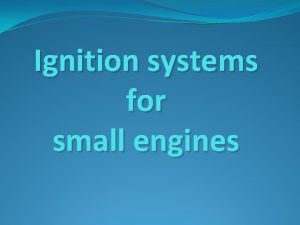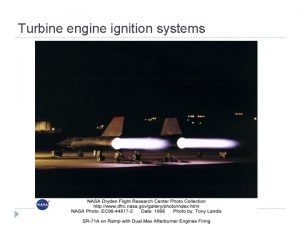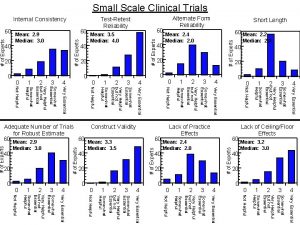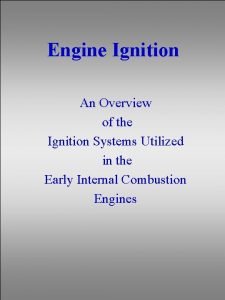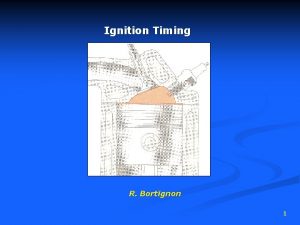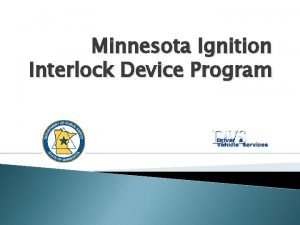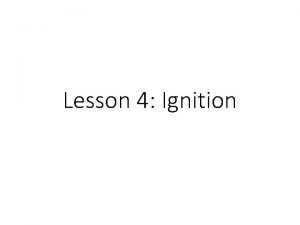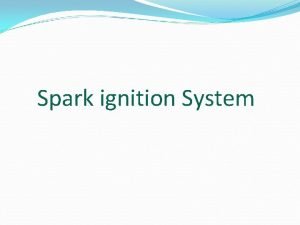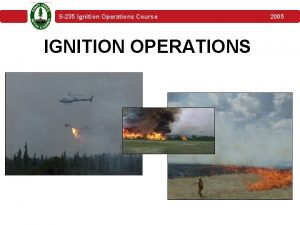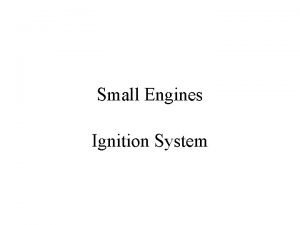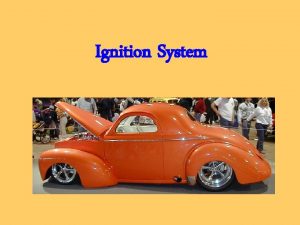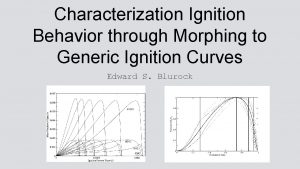Chapter 10 Ignition Systems Helpful Reading Chapter 10


















- Slides: 18

Chapter 10 Ignition Systems

Helpful Reading • Chapter 10 • Pages 195 -201 (up to “Switches”) • Pages 208 -211 (Battery Ignition Systems

Additional Helpful Reading • Chapter 4 “Fundamentals of Electricity, Magnetism, and Electronics” • Read pages 73 -82 (up to “Switches”) • Pay particular attention to pages 80 and 81

Magneto • A magneto ignition system has no outside energy source • No battery

Magnetism and Electricity • Key Point #1 • If a wire is moved past a magnet, the magnetic field is cut by the wire and current will flow in the wire • Source of current in primary windings of coil

Magnetism and Electricity • Key Point #2 • When electrons flow through a conductor, a magnetic field is developed around the conductor • Magnetic field developed around the primary windings

Magnetism and Electricity • Key Point #3 • Switch opens (shuts off) primary circuit so current stops • Current stops so magnetic field collapses • Collapses around secondary windings, as well, which are 100 times more than primary windings…increasing voltage

Coil • A “step-up” transformer • Increases the voltage

Coil • Two sets of wire windings • Primary • Secondary

Coil • Primary windings are fewer in number • Heavy copper wire • Circuit opened and closed by a switch of some sort

Coil • Switches • Breaker points in older models • Solid state ignition since mid 1980’s • No breaker points

Coil • Secondary windings • Many more turns (windings) of wire (100 Xs more) • Very fine copper wire • Connects to spark plug

Spark Plug • The spark plug wire connects the secondary winding to the spark plug • High Tension Lead

Spark Plug • Spark Plug • The center electrode of the spark plug carries the high voltage current to the spark plug gap

Coil • Auto coil has 20, 000 turns of fine copper wire in secondary windings • 200 turns in primary windings

Coil • 200 turns in primary windings • Current for primary winding circuit comes from the battery • Battery ignition system • NOT magneto ignition system

Battery • Recharge the battery by forcing DC (direct current) through the battery in the opposite direction it normally would flow.

Two-Cylinder Engines • Some have a “waste-spark” ignition system • Both plugs fire at the same time even though one cylinder is near TDC of the exhaust stroke…a “wasted” spark
 Chapter 10 ignition systems
Chapter 10 ignition systems Chapter 10 ignition systems
Chapter 10 ignition systems Hei and eis are examples of
Hei and eis are examples of Pre reading while reading and post reading activities
Pre reading while reading and post reading activities Chapter 34 ignition system technology
Chapter 34 ignition system technology A good or helpful result or effect
A good or helpful result or effect Harmful microorganisms
Harmful microorganisms A scout is trustworthy loyal
A scout is trustworthy loyal Acls helpful hints
Acls helpful hints Filipino family values
Filipino family values Gsp community recommendation
Gsp community recommendation Hope you find it helpful
Hope you find it helpful What does pre-write mean
What does pre-write mean Fred has a fluffy down pillow
Fred has a fluffy down pillow Positive, constructive, helpful behavior
Positive, constructive, helpful behavior Fixed interval schedule
Fixed interval schedule Not very helpful
Not very helpful Helpful mutation
Helpful mutation Difference between drama and theater
Difference between drama and theater
